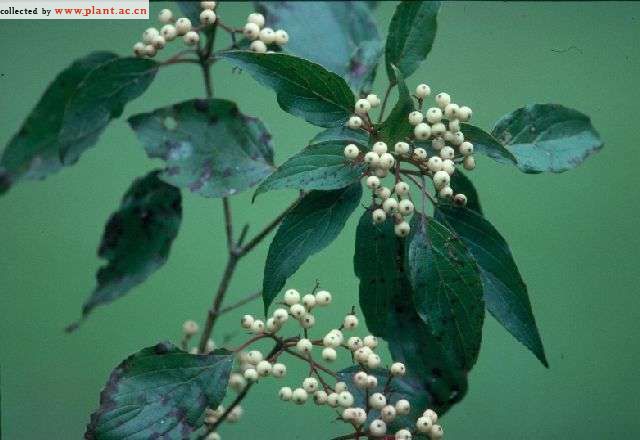Cornus asperifolia var. drummondiiRough-leaved dogwood
科:山茱萸科
Family:Cornaceae
属:山茱萸属
common name:Rough-leaved dogwood
introduce:Plant Type: Deciduous shrub
Family: Cornaceae
Missouri Native: Yes
Native Range: Virginia to Missouri, south to Florida and Texas
Height: 6 to 15 feet
Spread: 6 to 15 feet
Bloom Time: May - June
Bloom Color: Yellowish-white
Sun: Full sun to part shade
Water: Medium to wet
Maintenance: Medium
General Culture:
Easily grown in average, medium wet to wet soils in full sun to part shade. Tolerant of a wide range of soils, including poor ones. Tolerates drier soils than all other Missouri native dogwoods. Spreads by underground stems to form large colonies in the wild.
Noteworthy Characteristics:
Rough-leaved dogwood is a common, thicket-forming, Missouri-native dogwood that typically grows 6-15?tall and as wide. Throughout most of its growing range, it is primarily found in moist to wet locations. However in Missouri, it is more often found in dryish soils of rocky woods, glades, thickets and prairies (Steyermark). Common name refers to its elliptic to oval leaves (to 5?long) that are rough above and downy below. Tiny, yellowish-white flowers appear in flat-topped clusters (to 2.5?diameter) in late spring. Flowers lack the showy bracts of flowering dogwood (Cornus florida), being more similar in appearance to the flowers of gray dogwood (Cornus racemosa). Flowers give way to clusters of white drupes which mature in late summer. Fruit is attractive to birds and is generally considered to have as much if not more ornamental interest than the flowers. Twigs are reddish-brown. Fall color is variable, but may include quality shades of purple and red. Synonymous with Cornus drummondii. The botanical variety epithet honors 18-19th century Scottish botanist Thomas Drummond.
Problems:
This native species is well-adapted to Missouri and has no serious insect or disease problems here. Some susceptibility to leaf spot, twig and leaf blights and canker. Scale, leaf miner and borers are occasional insect pests.
Uses:
Ornamental features are minimal. Best in naturalistic plantings in moist soils where plants are allowed to spread and form thickets. Property line screens. Informal hedges. Shrub borders.
